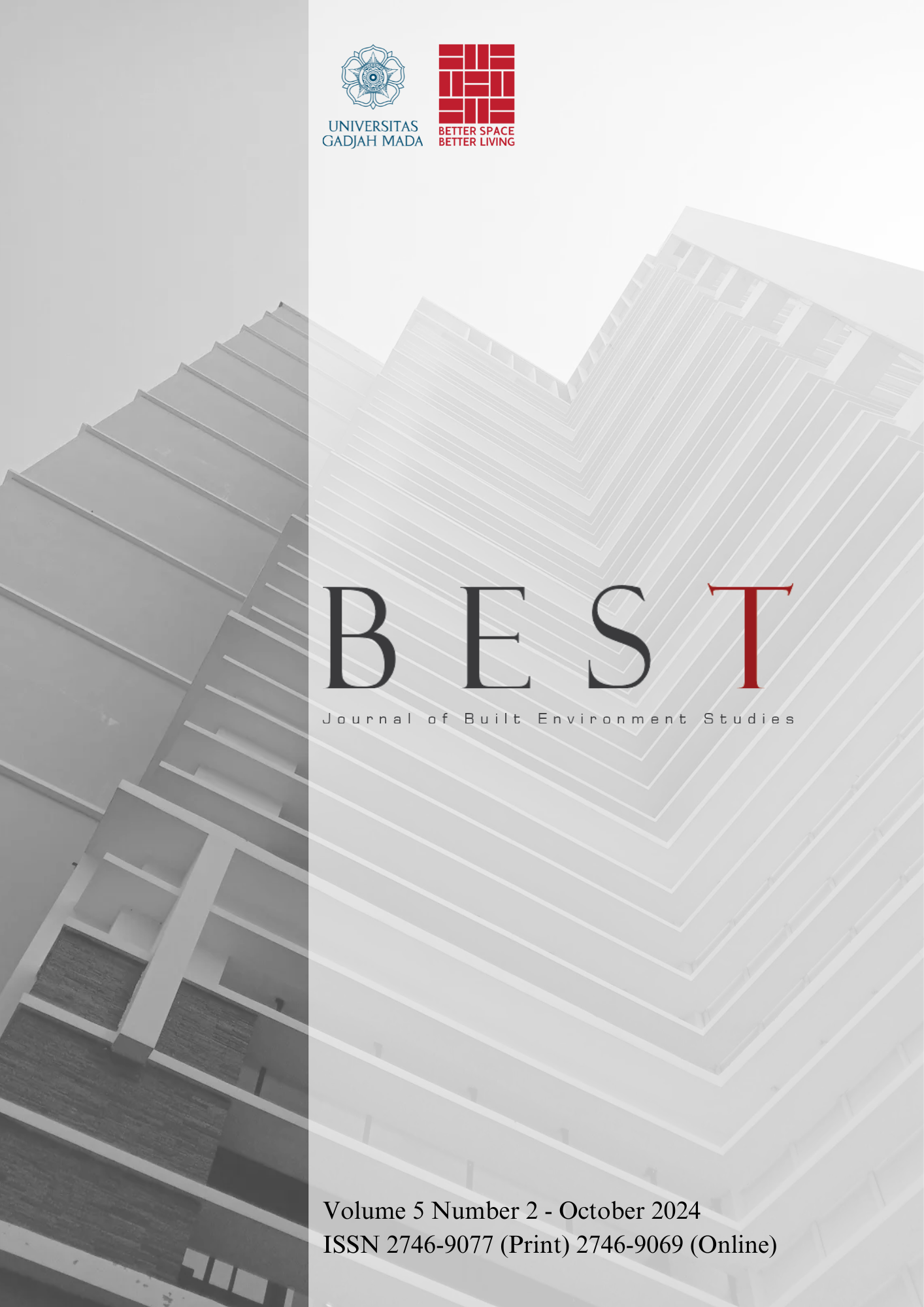Issue
Date Log
OPTIMIZING BATIK TOURISM DISTRICT DESIGN BASED ON POLICY ANALYSIS: CASE STUDY OF KAUMAN PEKALONGAN BATIK VILLAGE
Corresponding Author(s) : Kartiansmara Purnaumbara
Built Environment Studies,
Vol 5 No 2 (2024)
Abstract
Batik industry, the largest generator of income, has a significant role in the economic development of Pekalongan City. According to data from the Pekalongan City Department of Industry and Labor, there are roughly 863 batik companies in Pekalongan. However, the environmental concerns raised by the industries are equally alarming. Lack of communal batik waste treatment (IPAL) with sufficient requirements causes water contamination, odors, filth, and other pollution problems in some parts of the city. There is also a lack of comprehensive tourism programs from the government that can sustain momentum in the tourism sector. This research focuses on analyzing Pekalongan City Government policies using SWOT analysis to identify vital factors to improve strategies for future optimization. The analysis results are subsequently put within the built environment framework using the design by research method to generate design strategies to improve built environment quality. These strategies were then implemented in the Kauman Batik Tourism Village case study through building arrangements, zoning, circulation arrangements, and proposed policies for community engagement to encourage more sustainable growth.
Keywords
Download Citation
Endnote/Zotero/Mendeley (RIS)BibTeX
